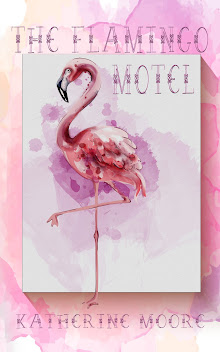Thursday, September 28, 2017
United for Puerto Rico
You've seen the pictures. You've watched the interviews with the mayor of San Juan. This is a crisis. Puerto Ricans are Americans. Donate here.
Friday, September 1, 2017
A List of Books About Women in Hollywood
 I've thought a lot about the role of women in Hollywood. I have worked as a reader, as an executive, as a screenwriter, and even as a set caterer. I've worked for some terrific women--Lauren Shuler Donner, Kathryn Bigelow, Nina Jacobson--and I've seen how male Hollywood is consistently surprised when "women's movies" actually make money. As if, somehow, those execs didn't realize that women went to movies too. I decided to look around and see if there were any books on the topic. Here's a short list.
I've thought a lot about the role of women in Hollywood. I have worked as a reader, as an executive, as a screenwriter, and even as a set caterer. I've worked for some terrific women--Lauren Shuler Donner, Kathryn Bigelow, Nina Jacobson--and I've seen how male Hollywood is consistently surprised when "women's movies" actually make money. As if, somehow, those execs didn't realize that women went to movies too. I decided to look around and see if there were any books on the topic. Here's a short list.1. A Woman's View: How Hollywood Spoke to Women 1930-1960 by Jeanine Basinger.
Now, Voyager, Stella Dallas, Leaver Her to Heaven, Imitation of Life, Mildred Pierce, Gilda…these are only a few of the hundreds of “women’s films” that poured out of Hollywood during the thirties, forties, and fifties. The films were widely disparate in subject, sentiment, and technique, they nonetheless shared one dual purpose: to provide the audience (of women, primarily) with temporary liberation into a screen dream—of romance, sexuality, luxury, suffering, or even wickedness—and then send it home reminded of, reassured by, and resigned to the fact that no matter what else she might do, a woman’s most important job was…to be a woman. Now, with boundless knowledge and infectious enthusiasm, Jeanine Basinger illuminates the various surprising and subversive ways in which women’s films delivered their message.
2. In the Company of Women by Grace Bonney
Over 100 exceptional and influential women describe how they embraced their creative spirit, overcame adversity, and sparked a global movement of entrepreneurship. Media titans and ceramicists, hoteliers and tattoo artists, comedians and architects—taken together, these profiles paint a beautiful picture of what happens when we pursue our passions and dreams.
3. Unruly Girls, Unrepentant Mothers: Redefining Feminism on Screen by Kathleen Rowe Karlyn.
This is a scholarly book from the University of Texas, and the continued examination of ideas first articulated in Karlyn's book Unruly Women. I haven't read this book and would love to, but it's hideously expensive--the Kindle version is $30, which is kind of beside the point of making books available in digital editions.
 4. Go West Young Women! The Rise of Early Hollywood by Mary A. Hallett.
4. Go West Young Women! The Rise of Early Hollywood by Mary A. Hallett. In the early part of the twentieth century, migrants made their way from rural homes to cities in record numbers and many traveled west. Los Angeles became a destination. Women flocked to the growing town to join the film industry as workers and spectators, creating a "New Woman." Their efforts transformed filmmaking from a marginal business to a cosmopolitan, glamorous, and bohemian one. By 1920, Los Angeles had become the only western city where women outnumbered men. In Go West, Young Women, Hilary A. Hallett explores these relatively unknown new western women and their role in the development of Los Angeles and the nascent film industry.
Labba Bray's Beauty Queens...a review
Libba Bray’s novel BeautyQueens is a satire that plays out like an all-female Lord of the Rings, a
project that is now, contentiously, in development at Warner Brothers. The
author has written an essay for Entertainment Weekly about what
happened when Hollywood came calling for her project, and it’s definitely worth
the read if you’re interested in what people are calling, “Hollywood’s Woman
Problem.”
If you haven’t read the book, here’s my review:
When a plane full of teenage beauty contestants crashes on a
not-quite-deserted island, the young women find themselves fighting for
survival with all their pageant skills and determination.
It’s an old show business axiom that “Satire is what closes
Saturday night.” In Beauty Queens, Bray
lets loose on a ton of popular culture topics, from reality shows (Amish girls
and strippers share a house on Girls Gone Rumpspringa) to beauty
pageants to plucky businesswomen running for president. She hits her targets too, for the most part,
although the arch tone of the book’s prologue is a little annoying.
The result is not unlike the HBO movie about the Texas
cheerleader murdering mom, which was played tongue-in-cheek to good
effect. The problem is that this
estrogen-soaked version of Lost meets Lord of the Flies meets Survivor
is kind of one note and awfully silly and it’s hard to see what demographic
it plays to.
There’s also a part of us that sees the story more like one
of those parodies of contemporary movies, like Vampires Suck. Adding the satire to the comedy is not
necessarily a commercial choice. (Two
hilarious satires about politics, Election and Dick were both
disastrous at the box office ($15 million and $6 million returns, with no
international distribution), and this satire seems to have an even more narrow
focus.) Also, the shows that are the
targets here seem like somewhat dated topics—having been done to death in
Comedy Central and Mad TV and SNL and … many other places.
Subscribe to:
Posts (Atom)








